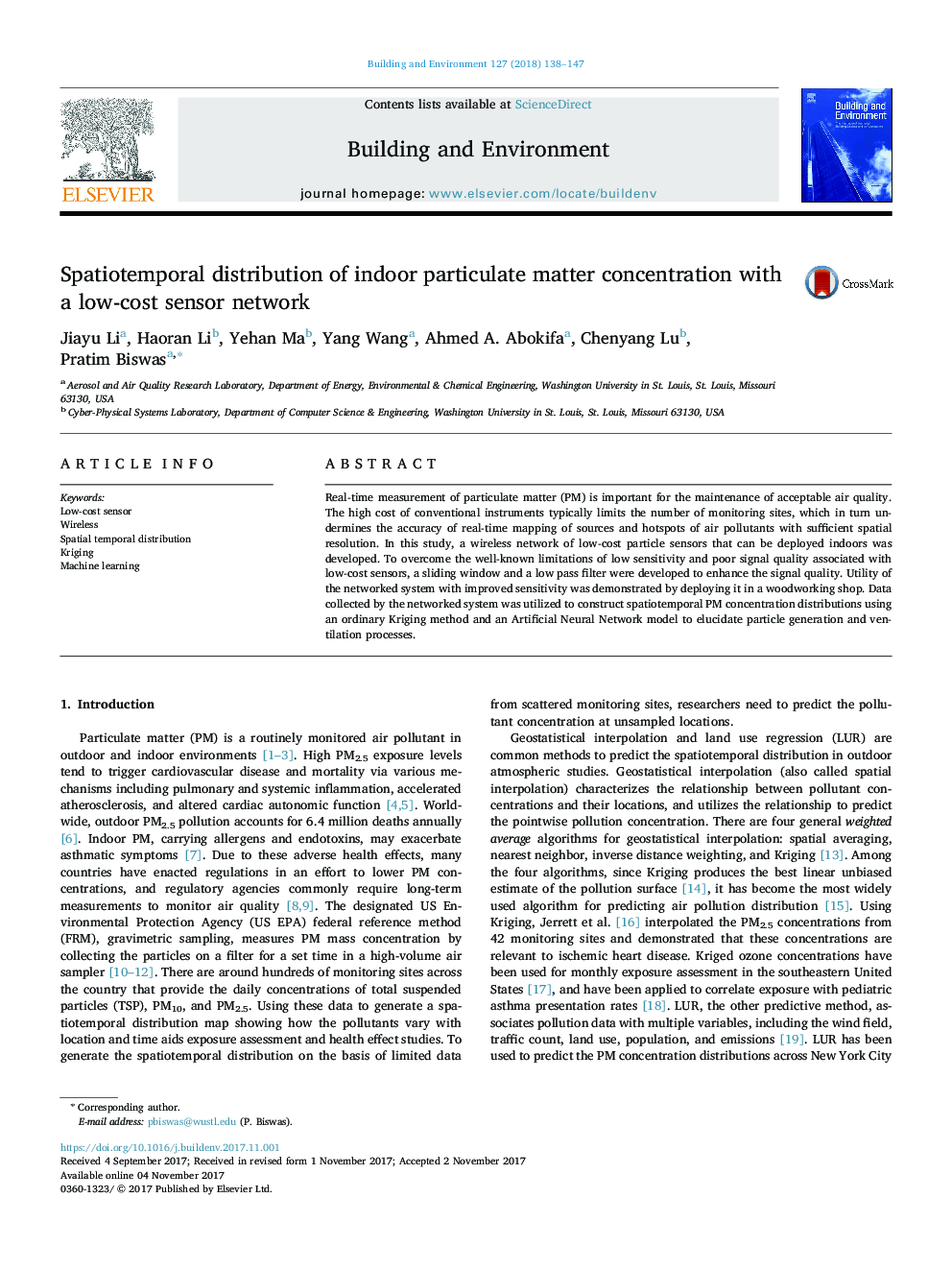| Article ID | Journal | Published Year | Pages | File Type |
|---|---|---|---|---|
| 6698474 | Building and Environment | 2018 | 10 Pages |
Abstract
Real-time measurement of particulate matter (PM) is important for the maintenance of acceptable air quality. The high cost of conventional instruments typically limits the number of monitoring sites, which in turn undermines the accuracy of real-time mapping of sources and hotspots of air pollutants with sufficient spatial resolution. In this study, a wireless network of low-cost particle sensors that can be deployed indoors was developed. To overcome the well-known limitations of low sensitivity and poor signal quality associated with low-cost sensors, a sliding window and a low pass filter were developed to enhance the signal quality. Utility of the networked system with improved sensitivity was demonstrated by deploying it in a woodworking shop. Data collected by the networked system was utilized to construct spatiotemporal PM concentration distributions using an ordinary Kriging method and an Artificial Neural Network model to elucidate particle generation and ventilation processes.
Related Topics
Physical Sciences and Engineering
Energy
Renewable Energy, Sustainability and the Environment
Authors
Jiayu Li, Haoran Li, Yehan Ma, Yang Wang, Ahmed A. Abokifa, Chenyang Lu, Pratim Biswas,
